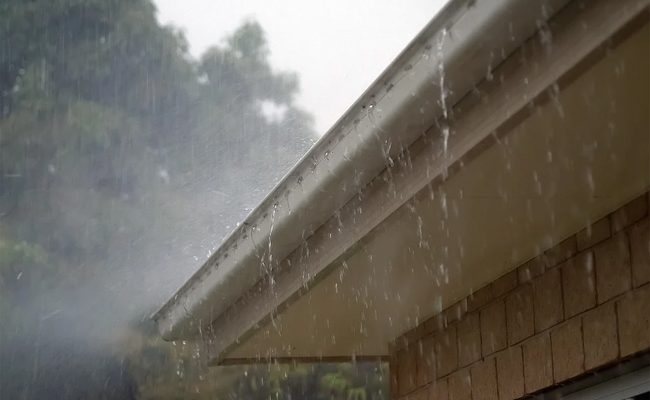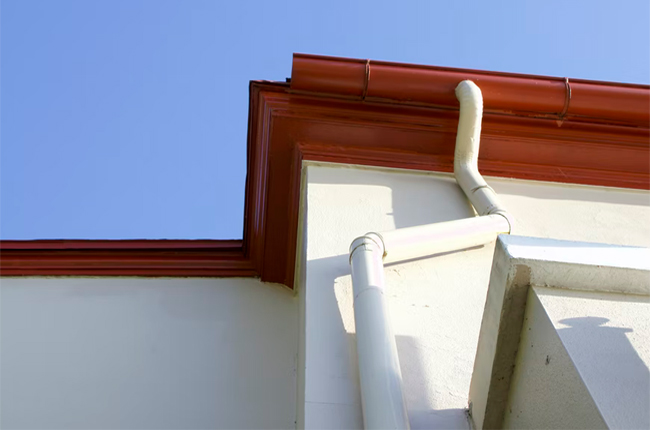
To keep your home from being flooded or damaged by rainwater, you need to make sure that you have proper drainage systems in place. While this may seem straightforward, many people fail to implement the right drainage systems. Every year, 98% of basements will be damaged by water, an easily preventable problem.
Outdoor drainage systems are your first line of defense when it comes to preventing or minimizing water damage. To protect your property, there are five main types of ground drainage systems that you may use around your property depending on the problem you face.
5 Types of Outdoor Drainage Systems
1. French Drain
French drains are a type of perforated pipe drain that is used on flat yards and surfaces. They are used to redirect standing water. If ignored, standing water will become a famous breeding ground for mosquitoes and could harm your yard. By turning this water into a French drain, you reduce the harm done and improve your property.
To install French drains, a trench for the pipe must first be dug. The trench should slope away from the rest of your property to protect your foundation. Many people choose to use gravel to fill in the trench once the drain is installed so that water can easily trickle down into the drain.
2. Footing Drain
Footing drains are installed along the outside perimeter of your home. A perforated pipe is installed in a trench, usually level with your footing, and covered with gravel. This type of drain catches water that may come off of your roof and, rather than letting it leak through the footing and into your home, the drain redirects the water to a storm drain.
3. Gutter Drainage System

Gutters are a type of roof drainage system, though they also help protect the foundation of your home as well. Rather than letting rain water run off your roof and soak into the ground and your foundation, gutters catch the water and direct it to a downspout.
There are a couple of different options when it comes to where you want your downspout to drain. The most common method is to have it sitting on top of the surface and pointing away from your home. If there’s a slight slope, this will help water trickle away from your home’s foundation. If there is no slope, though, then it may lead to a build-up of standing water.
Another option is for your downspout to lead into a storm drain or water catch basin. This will prevent the water from building up around your property and will send it directly into your city’s storm drainage system. It can also be filtered and collected, should you choose to use the rainwater for your purposes.
4. Trench Drain
Trench drains are more commonly used for commercial properties, though they can be used for residential properties as well. These linear drain systems use a perforated grate to allow water in and then send it through a channel towards a storm drain or catch basin.
The materials used in trench drains will vary, but common channel materials include stainless steel, HDPE, and concrete (polymer or fiber reinforced). No matter what your chosen material is, these drains can be made as short or as long as you need them to be and can be made to cover an entire problem area.
On residential properties, trench drains are commonly used around pools and in showers. They use gravity to direct water to where you want it to go, so the channel is always slightly sloped. If an area does not allow for the use of a pre-sloped drain, it is possible to use a neutral, flat drain instead.
5. Grading Drainage
Grading drainage doesn’t involve the installation of a drain system. Instead, it centers around your property so that all the areas around your home slope away from the foundation. It creates a natural drainage system that uses gravity to redirect water. When completed, the landscaping will still look natural and you won’t have to worry about a visible drain.
Grading is a good solution for those who have dirt or gravel driveways as this can help prevent your driveway from getting washed out or flooding with heavy rains.
Why Should You Invest in Outdoor Drainage Systems?
Without good drainage systems in place, you put your home at risk of water damage and flooding. While almost over 40% of people believe that water damage is covered by home insurance, they are often sorely mistaken. Only certain water damage is covered by homeowners insurance and, unfortunately, you may find this out until after the damage is done.
Unless water damage is covered by a broken or leaking pipe, frozen pipes, or a sudden and unexpected accident such as a broken dishwasher, most insurances won’t cover the damage costs. This includes flooding, surface water buildup, and water damage caused by earthquakes.
While a lot of water damage may be caused by plumbing or broken pipes, a lot of damage can be done if you get a lot of heavy rain and aren’t prepared for it. Having drainage systems in place can reduce the risk of water damage and protect your home from the damage that isn’t covered by your insurance.
Protect Your Home, Install Outdoor Drains
Protecting your home isn’t difficult and with the right preparation, you can be ready to take on any storm that comes your way. Depending on the slope of your property and where your home is located, certain drain systems may be a better fit for you than others. In some cases, you may need to install multiple different drains to meet the needs of your property.
Before the next big storm and before the rainy season hits, take a quick walk around your property to make sure you’re prepared for the possibility of water buildup. If you aren’t, call a professional and get an outdoor drainage system installed as soon as possible to prevent complications from arising in the future.
Leave a Reply